1. Hirsutism
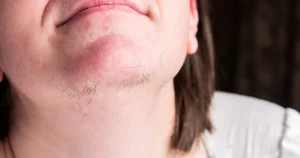
- Hirsutism is when women grow thick, dark hair on their face, chest, or back
- High male hormones (androgens) or conditions like PCOS, menopause, or Cushing’s syndrome cause it
- It’s not harmful, but it can affect confidence
- Sudden hair growth, a deeper voice, or muscular growth could be signs of a more serious issue.
2. Milia

- Milia are small, harmless white or yellow bumps on the skin, usually on the face.
- They form when dead skin cells get trapped under the skin.
- You don’t need any treatment.
3.Tinea capitis (Scalp Ringworm)
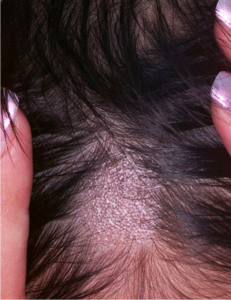
- Tinea capitis is a fungal infection on the scalp, causing itchy, scaly patches and hair loss
- Can spread through contact with infected people, animals, or objects
- Common in children and can be treated with antifungal medicine and medicated shampoo.
4. Sebaceous Hyperplasia
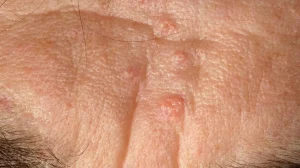
- Sebaceous hyperplasia is when oil glands grow larger, causing small bumps
- It’s common in middle-aged people and those with weakened immune systems
- Lumps are usually skin-coloured and appear on the face or upper body
- You don’t need treatment unless you want it.
5. Cherry Angiomas (also called Campbell de Morgan spots)
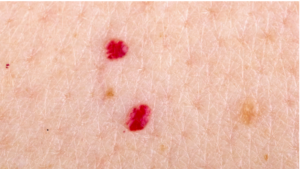
- Cherry angiomas are small, red bumps that often appear after age 30
- You can find them on the torso, arms, or legs
- They don’t cause pain, but see a doctor if they change or bleed.
6. Chapped Lips (Cheilitis Simplex)

- Chapped lips cause dryness, cracks, or swelling
- Caused by infection, allergies, or licking your lips too much
- Use lip balms and creams to treat them and avoid irritants.
7. Lichen Planus
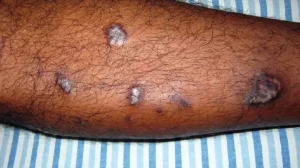
- Lichen planus (LP) is a rare, chronic autoimmune skin and mucous membrane disease
- Commonly presents as itchy, shiny, reddish-purple spots on the skin, or as white-gray patches in the mouth or on the lips
- Less commonly, LP may involve the genitals, scalp, ears, nails, eyes, and oesophagus
- It may go away on its own, but treatment may be required.
8. Cutaneous Lupus (or cutaneous lupus erythematosus, CLE)
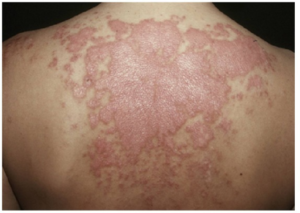
- Systemic lupus erythematosus (SLE) is a chronic autoimmune disease
- If it primarily affects the skin, it is called cutaneous lupus – and can cause red, scaly rashes, hair loss, or mouth ulcers
- It can be triggered by sunlight, pregnancy or stress
- There’s no cure, but immunosuppressive treatment may be required.
9. Tinea Versicolor
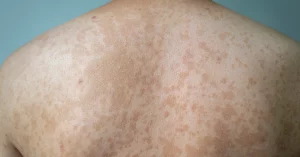
- Tinea versicolor is a fungal infection that causes discoloured patches on the skin, usually on the back, chest, or shoulders
- It isn’t contagious, and heat or sweat can trigger it
- Antifungal creams can treat it, but it may return.
10. Blister
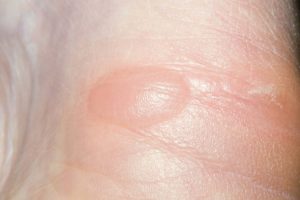
Blisters are small bubbles of clear fluid beneath the skin.
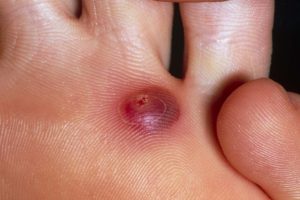
Blood blisters appear red or black as they contain blood rather than clear fluid.
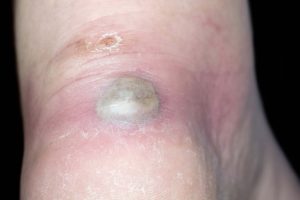
An infected blister may feel hot, have green or yellow pus; and the skin around it may turn red, though this is harder to see on darker skin.
- Caused by friction, burns, infection, or extreme heat or cold
- Keep it clean, dry, and covered. If it bursts, you may need use antiseptic cream to avoid infection.

